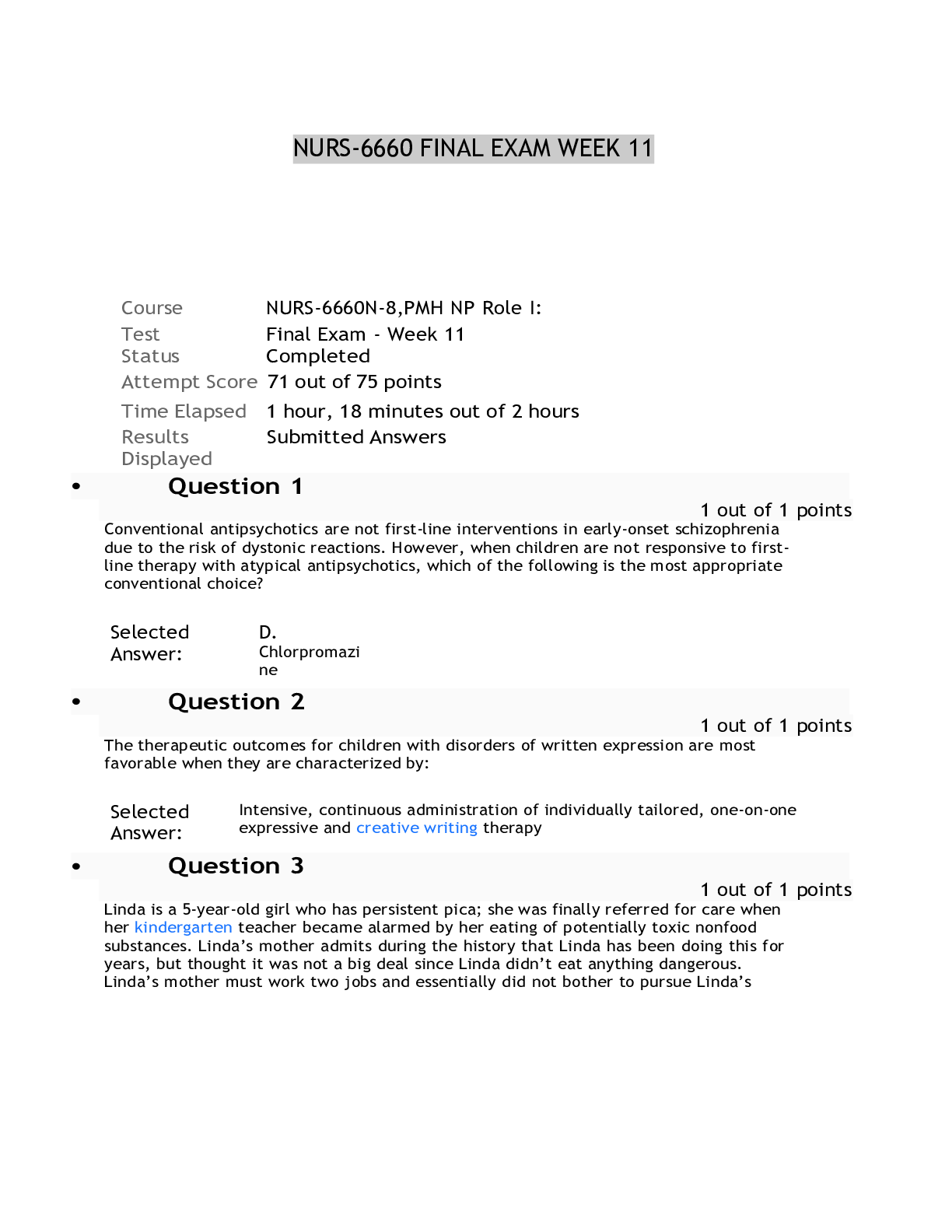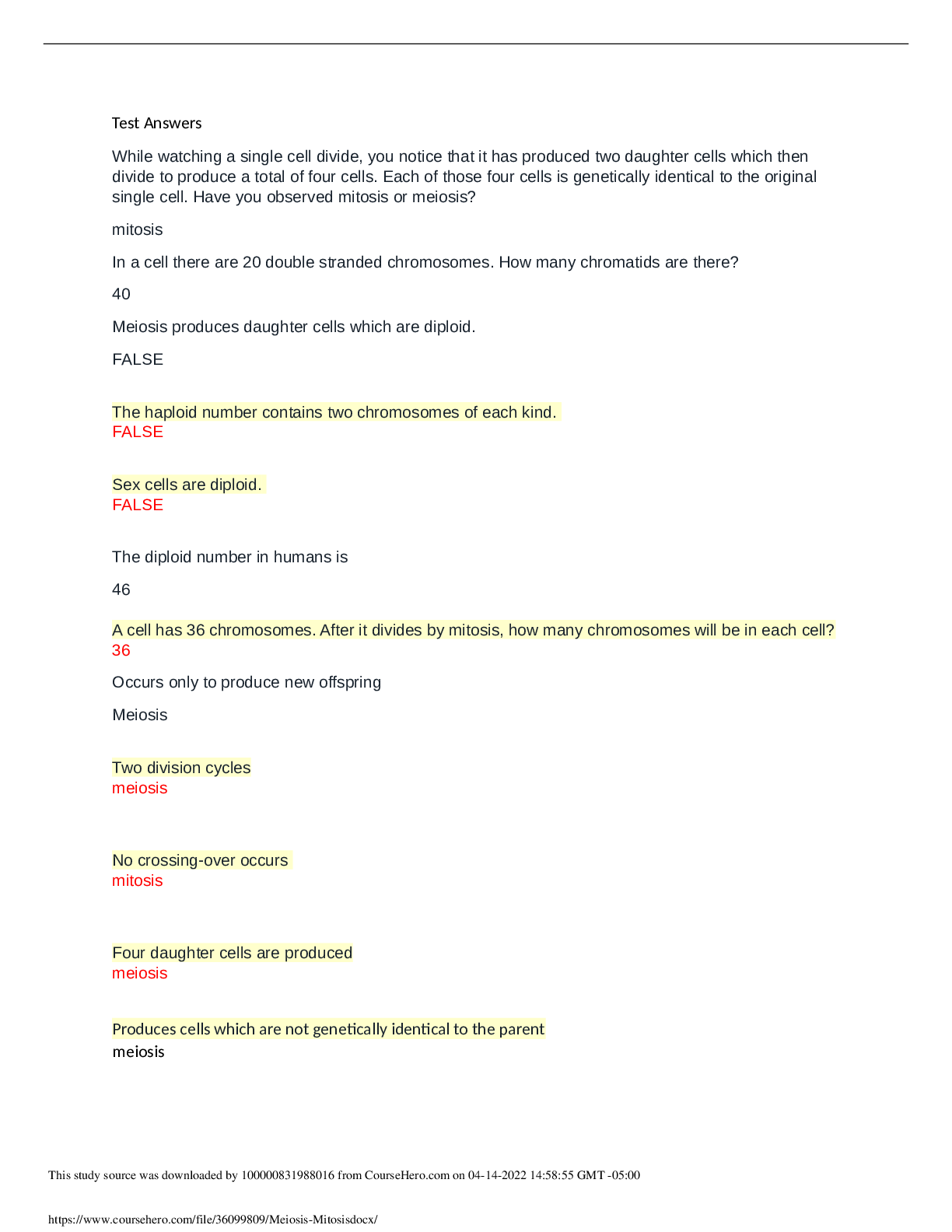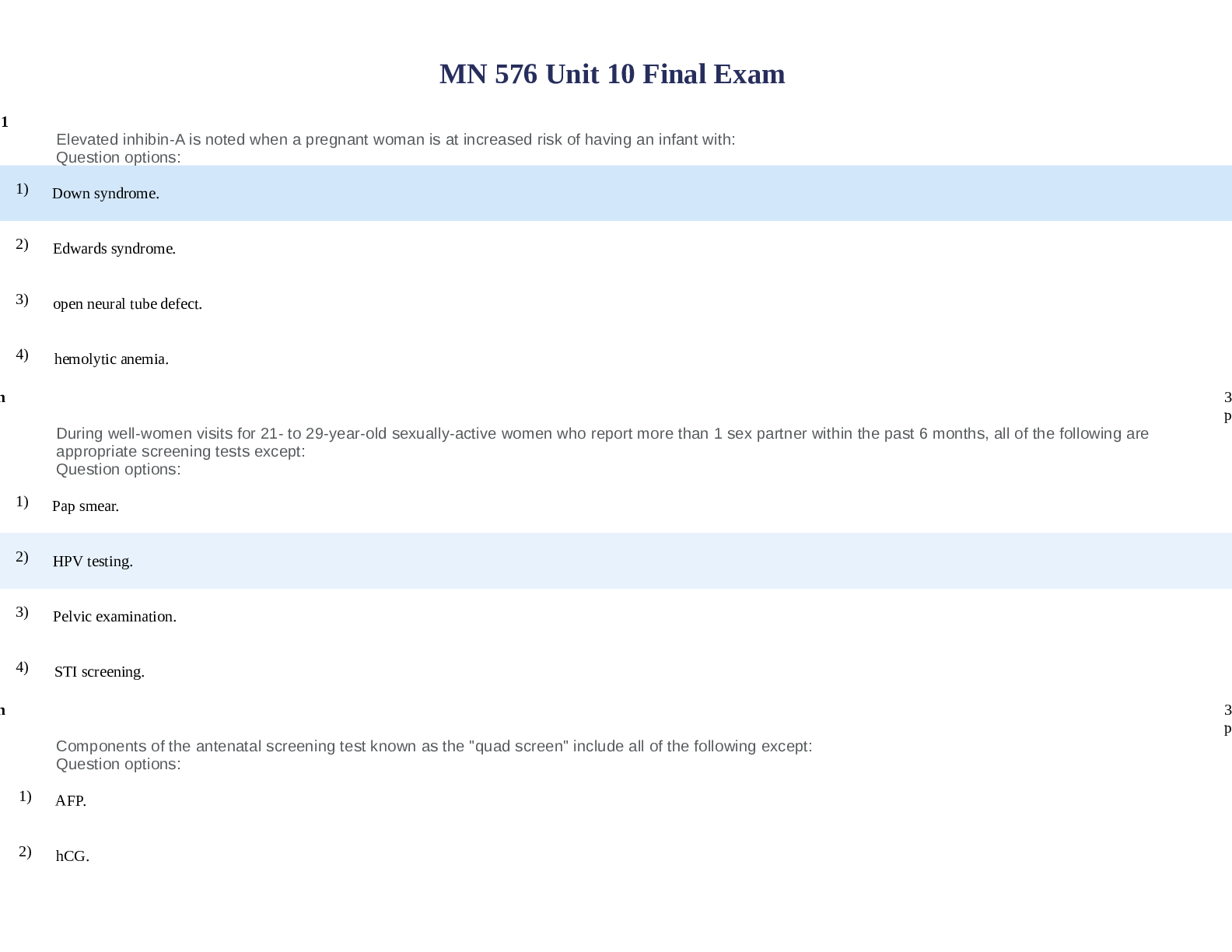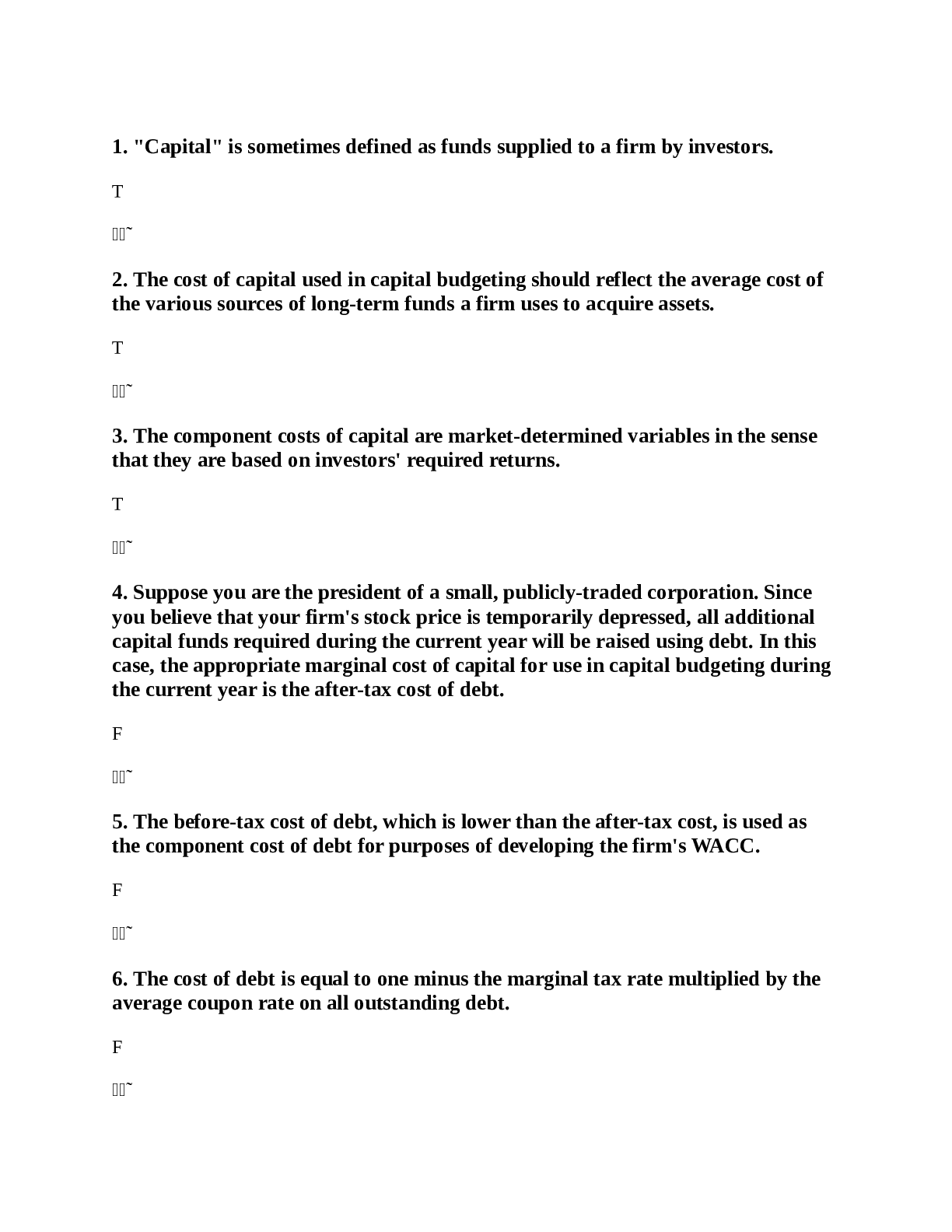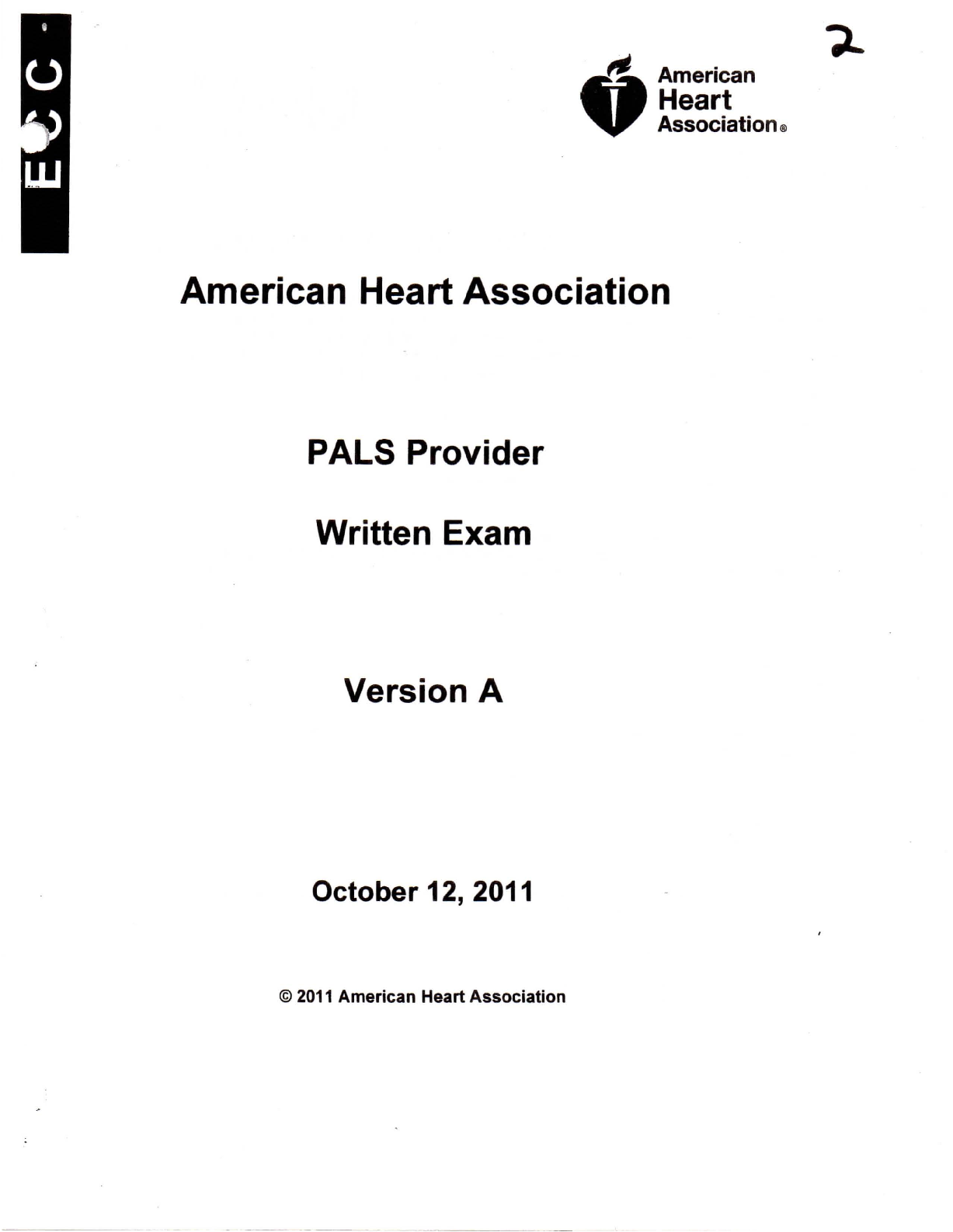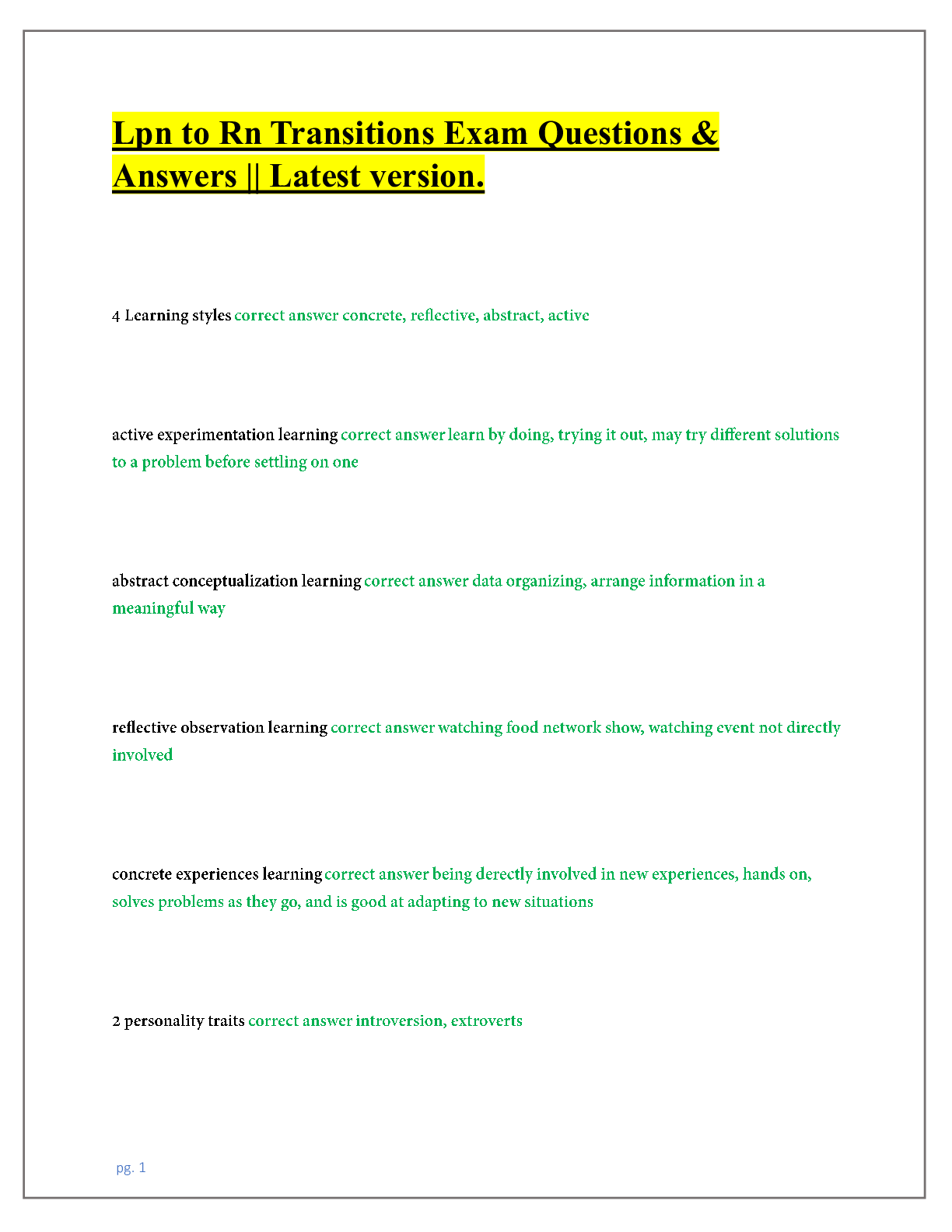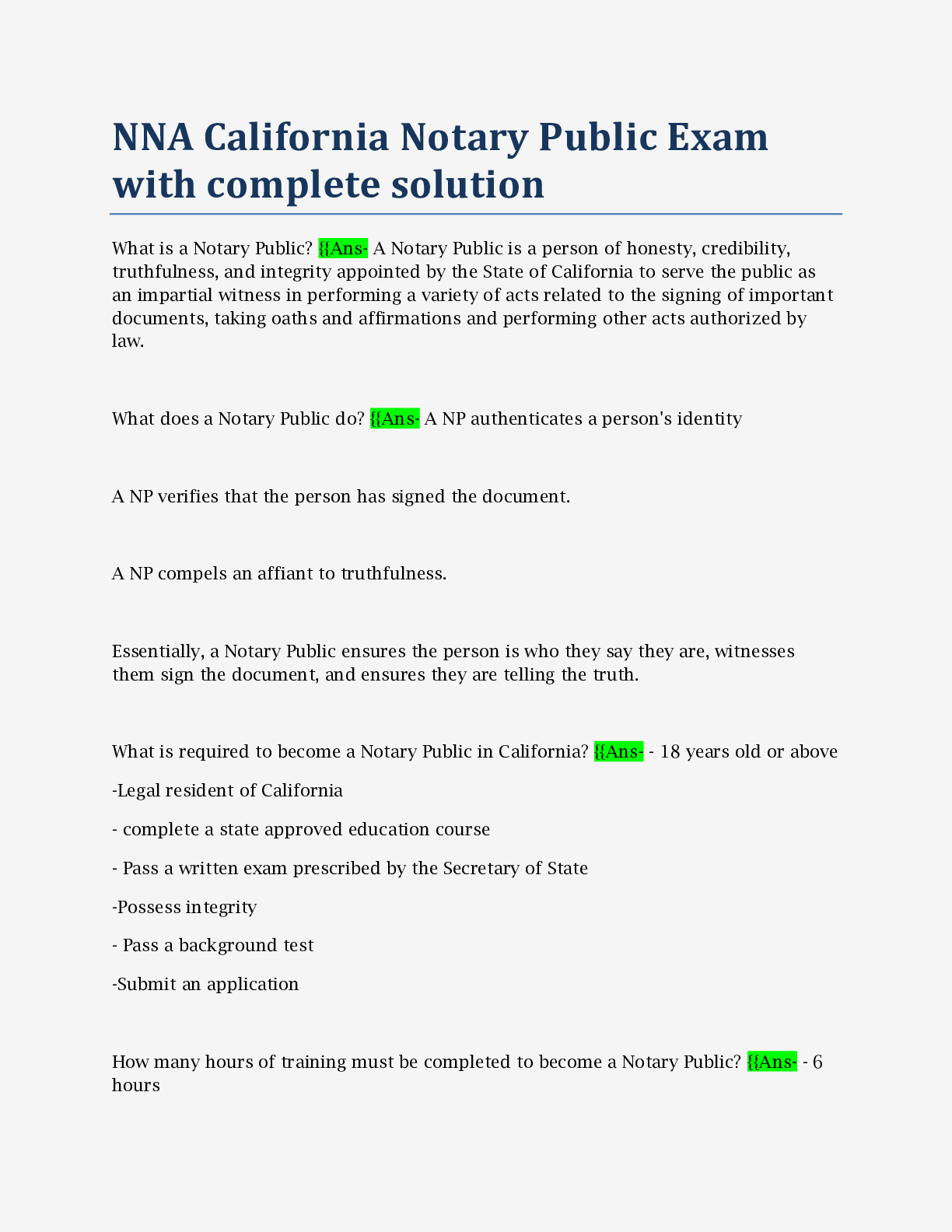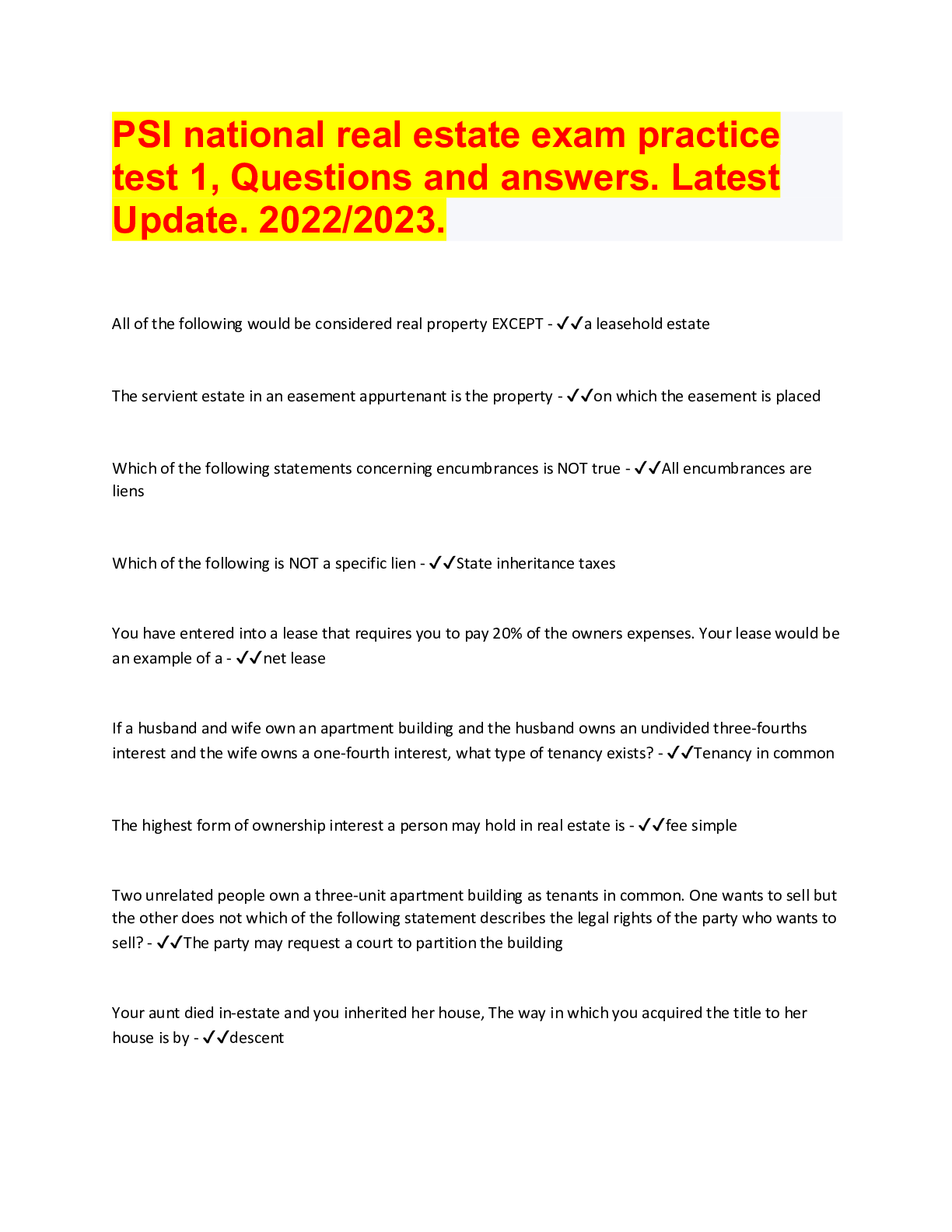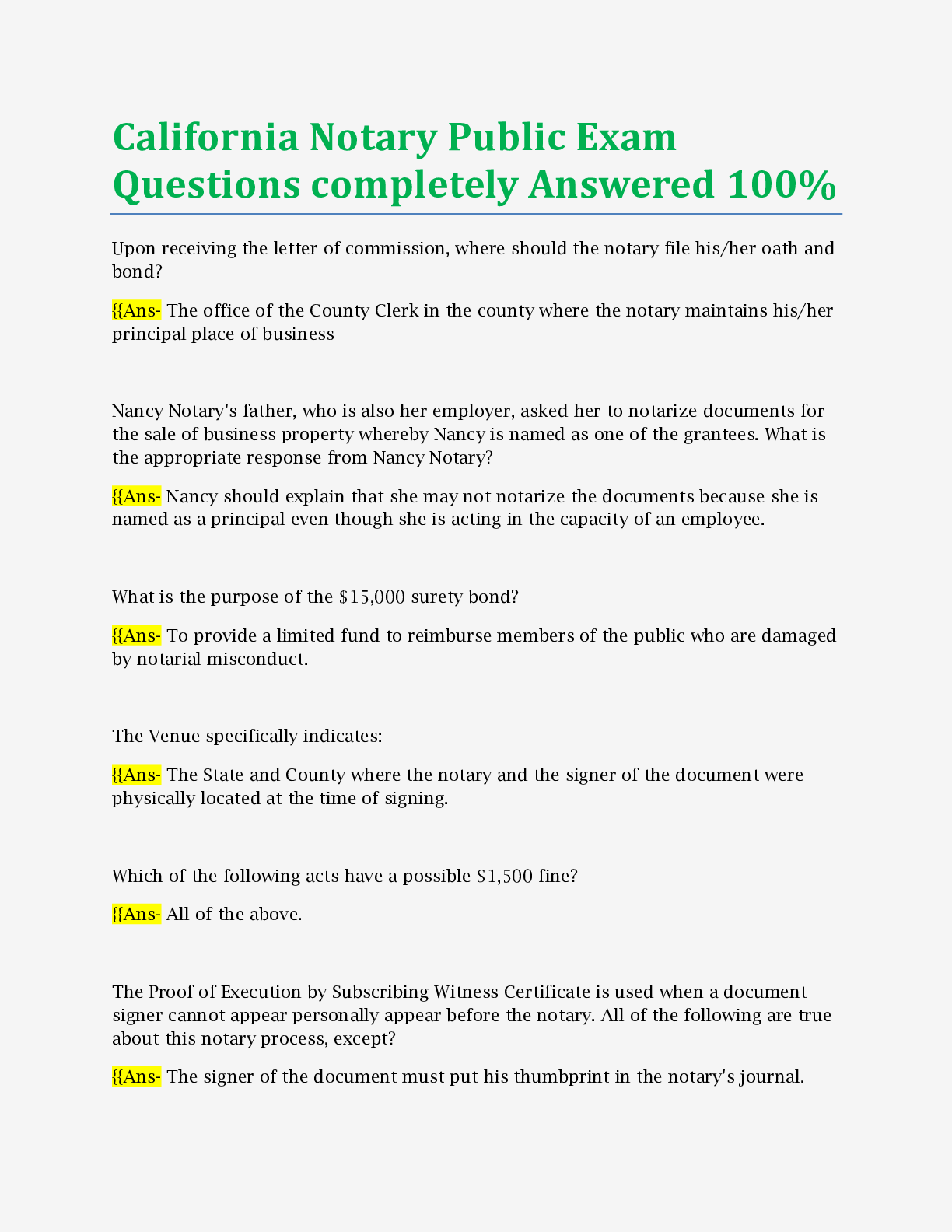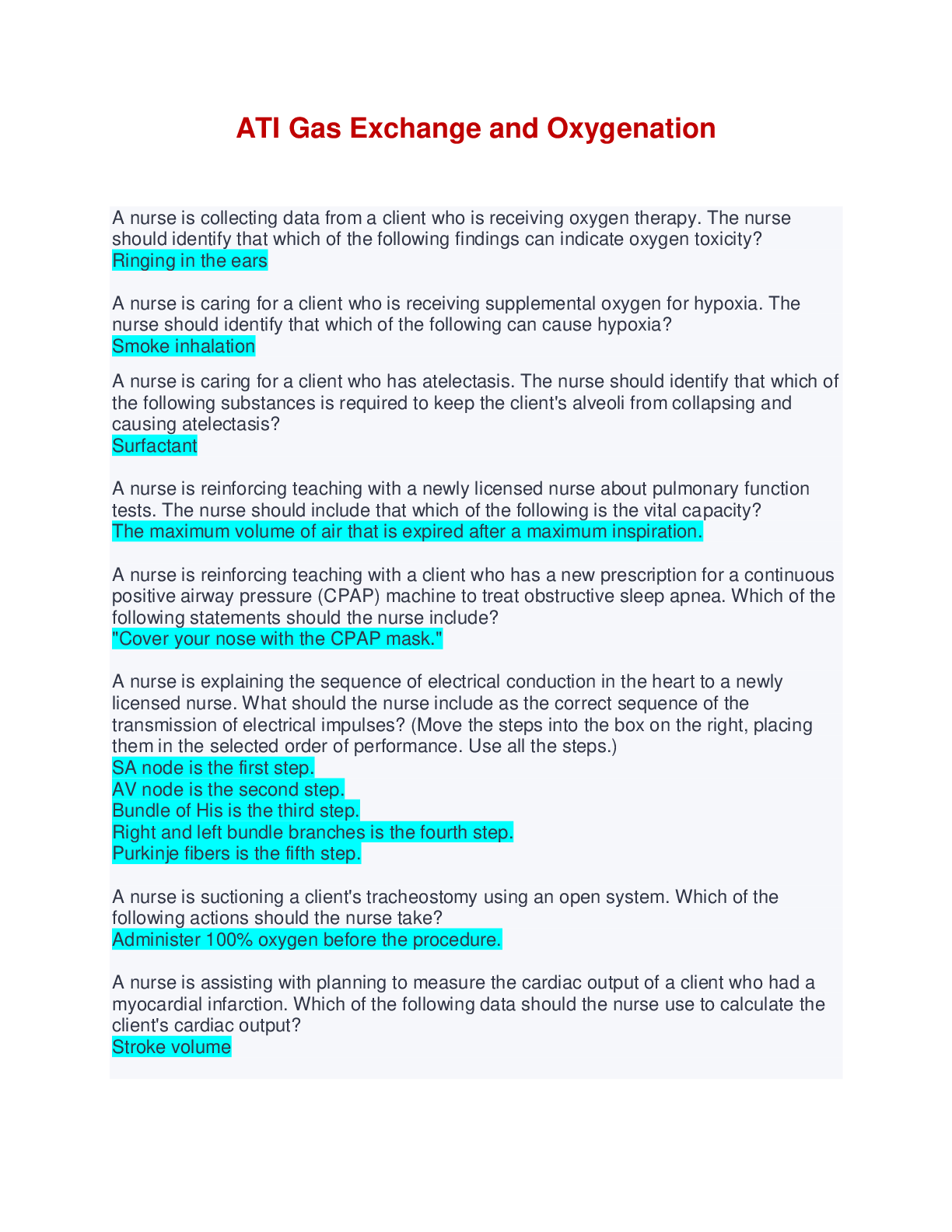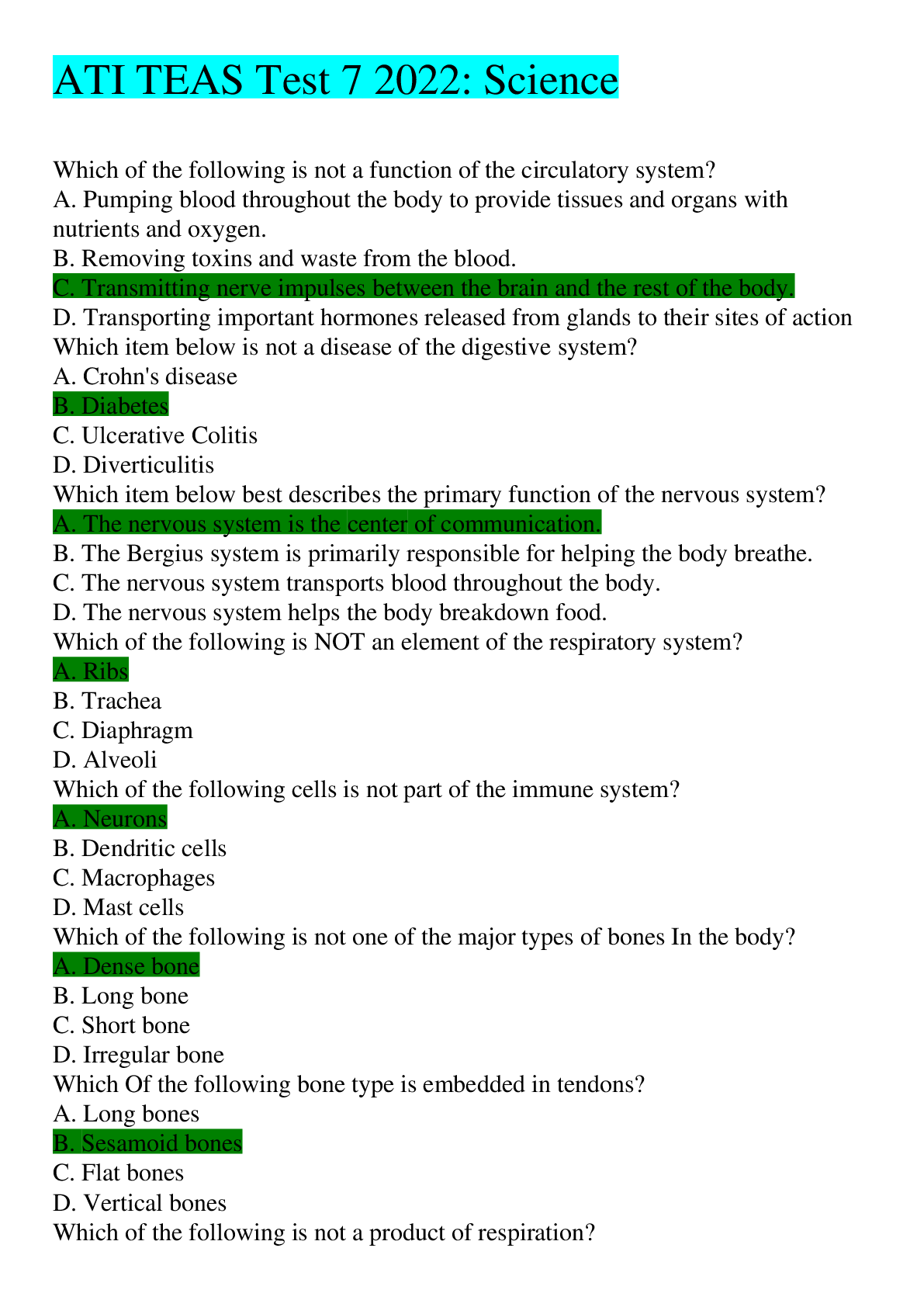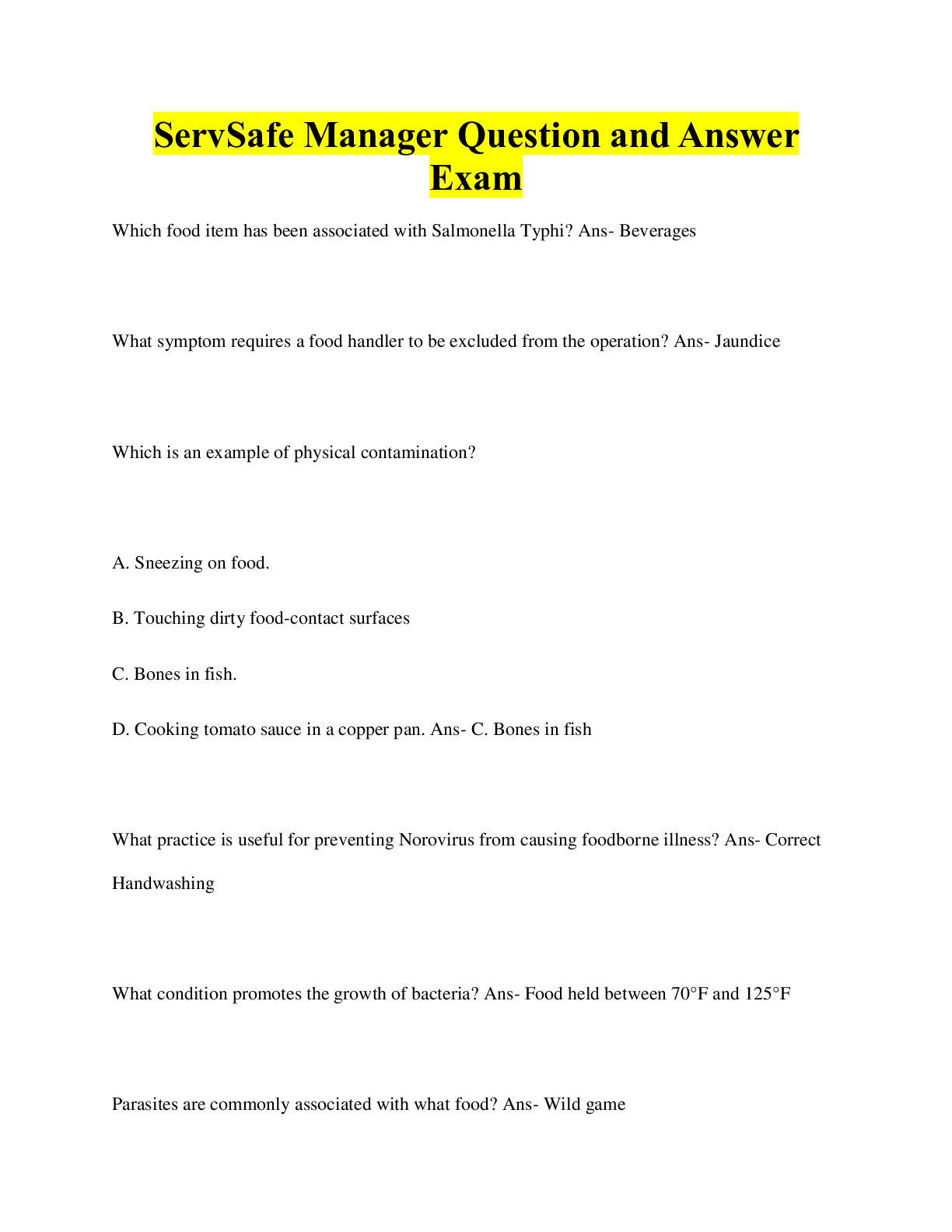FIN 101 Mid Term-Financial Management Exam 2021/2022 | Rated A
Document Content and Description Below
Q1. For a typical corporation, which of the following capital structures will result in the lowest weighted average cost of capital? a. 40% debt, 20% preferred stock, 40% common equity b. 50% debt,... 10% preferred stock, 40% common equity c. 60% debt, 10% preferred stock, 30% common equity d. 60% debt, 15% preferred stock, 25% common equity Q2. Why should firms that own and operate multiple businesses that have different risk characteristics use business-specific, or divisional costs of capital? a. Not all divisions have equal risk and the firm might accept projects whose returns are higher than are deemed appropriate. b. Not all business divisions have equal risk and the firm will likely become less risky in the future. c. Not all lines of business have equal risk and it is likely that the firm will accept projects whose returns are unacceptably low in relation to the risk involved. d. Use of the same weighted average cost of capital for all divisions may result in too much money being allocated to the least risky division. Q3. Due to changes in regulatory requirements, the transactions costs associated with selling corporate securities increased by $1 per share. This change will a. cause the cost of capital to decrease. b. cause the cost of capital to increase. c. have no effect on the cost of capital because transactions costs are expensed immediately. d. cause the cost of capital to decrease only if investors may be billed for part of the increase in transactions costs. Q4. Other things equal, management should retain profits only if the company's investments within the firm are at least as attractive as the stockholders' other investment opportunities. a. True b. False Q5. GHJ Inc. is investing in a major capital budgeting project that will require the expenditure of $16 million. The money will be raised by issuing $2 million of bonds, $4 million of preferred stock, and $10 million of new common stock. The company estimates is after-tax cost of debt to be 7%, its cost of preferred stock to be 9%, the cost of retained earnings to be 14%, and the cost of new common stock to be 17%. What is the weighted average cost of capital for this project? a. 12.20% b. 13.12% c. 13.75% d. 14.23% Q6. A corporate bond has a face value of $1,000 and a coupon rate of 5%. The bond matures in 15 years and has a current market price of $925. If the corporation sells more bonds it will incur flotation costs of $25 per bond. If the corporate tax rate is 35%, what is the after-tax cost of debt capital? a. 3.74% b. 4.45% c. 5.29 [Show More]
Last updated: 1 year ago
Preview 1 out of 17 pages
Instant download
.png)
Instant download
Reviews( 0 )
Document information
Connected school, study & course
About the document
Uploaded On
Aug 31, 2021
Number of pages
17
Written in
Additional information
This document has been written for:
Uploaded
Aug 31, 2021
Downloads
0
Views
28

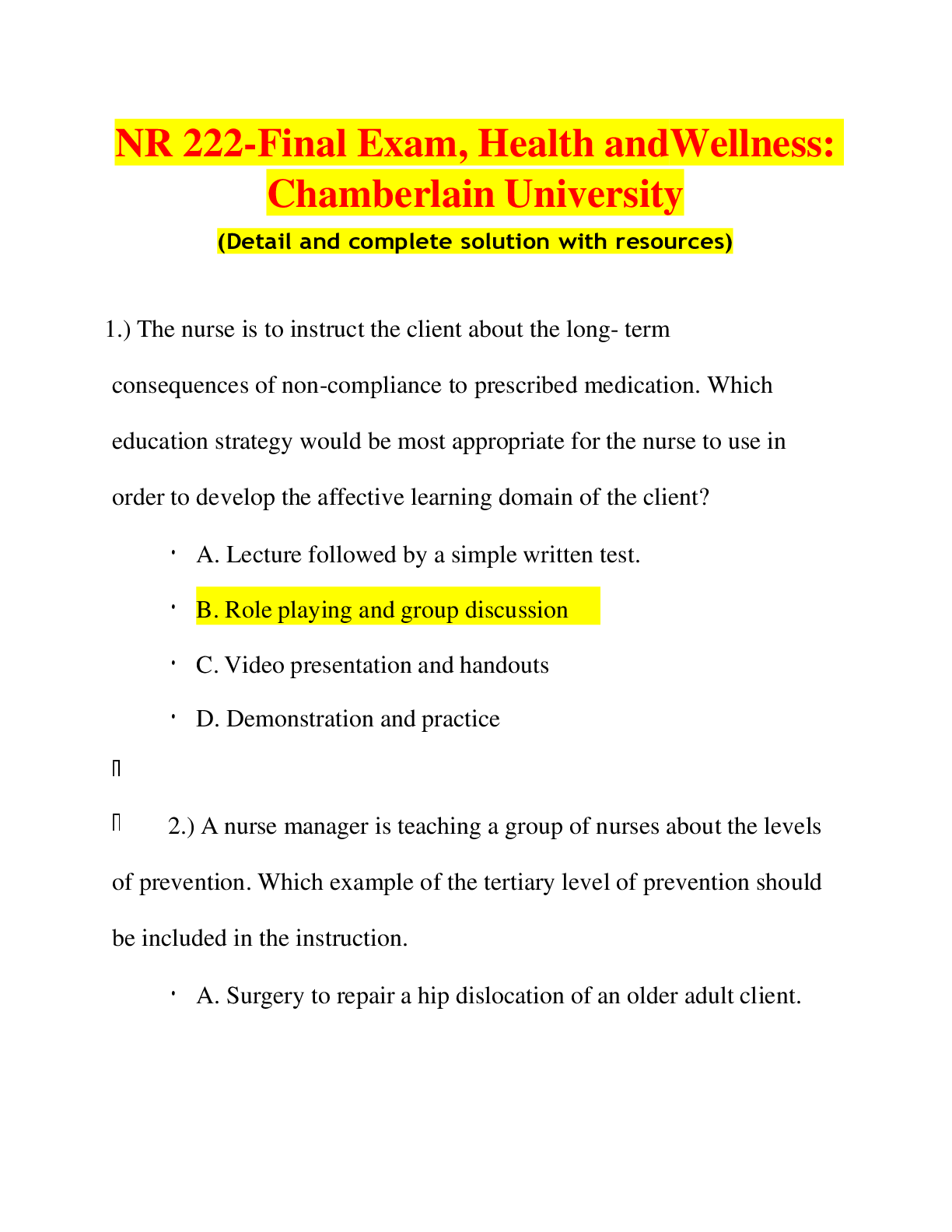
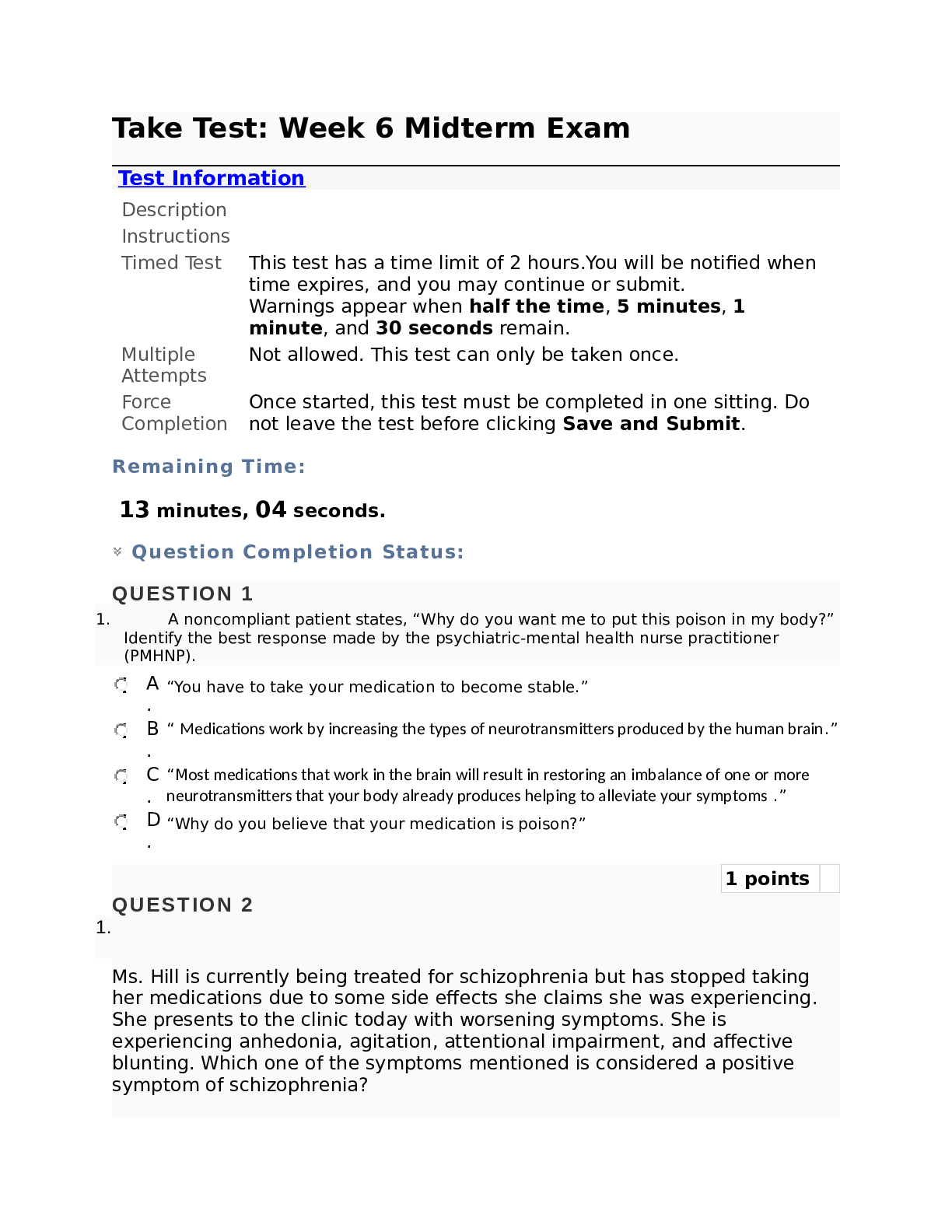
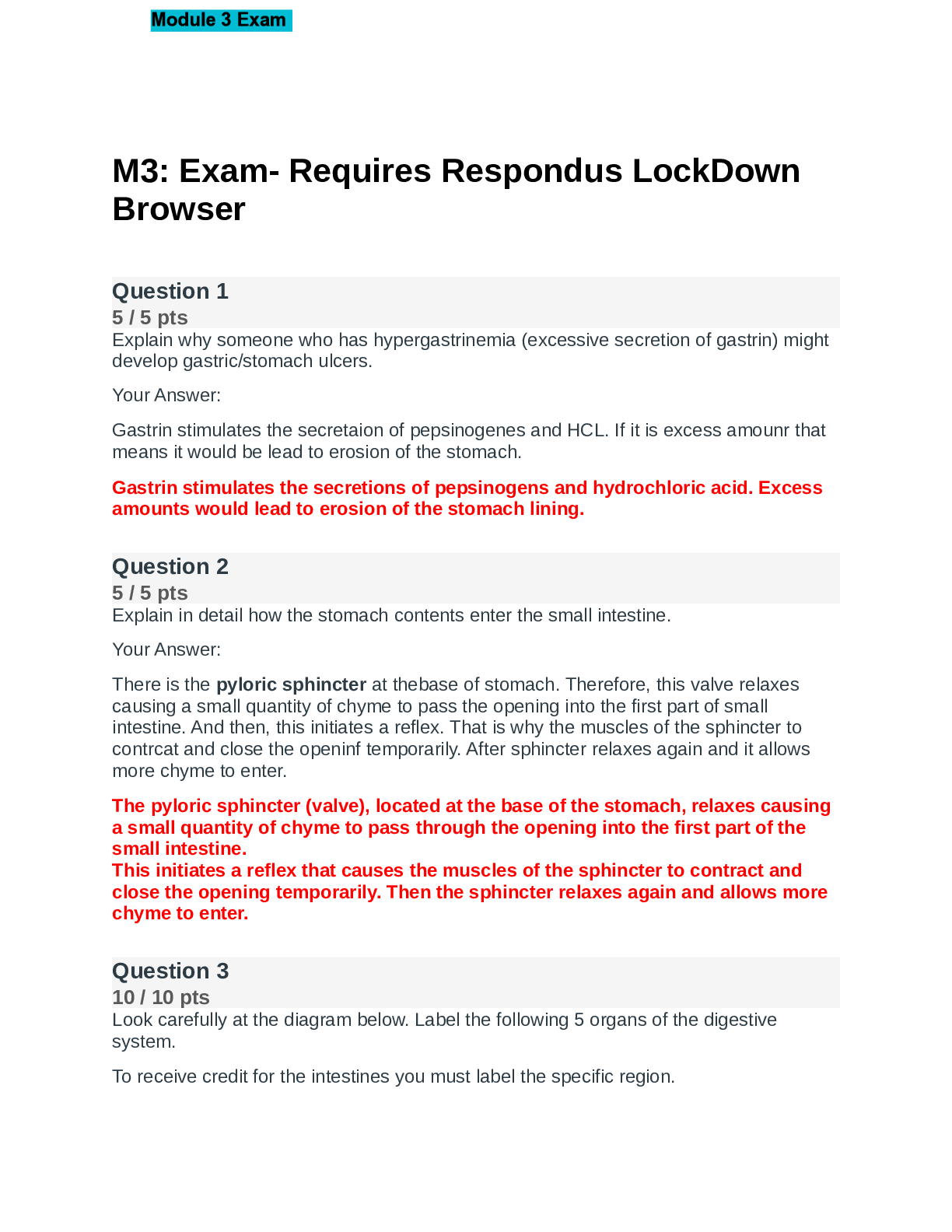

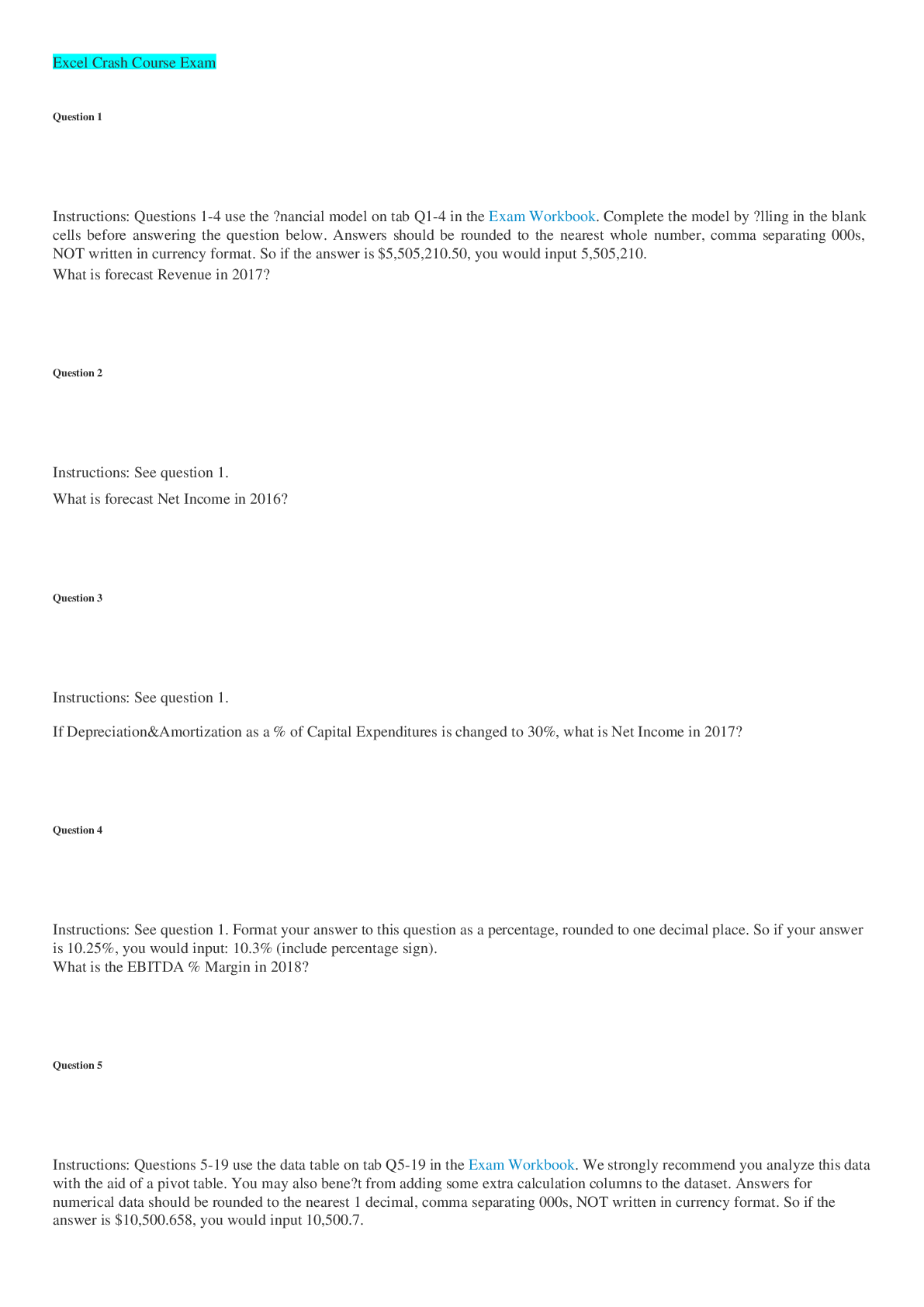

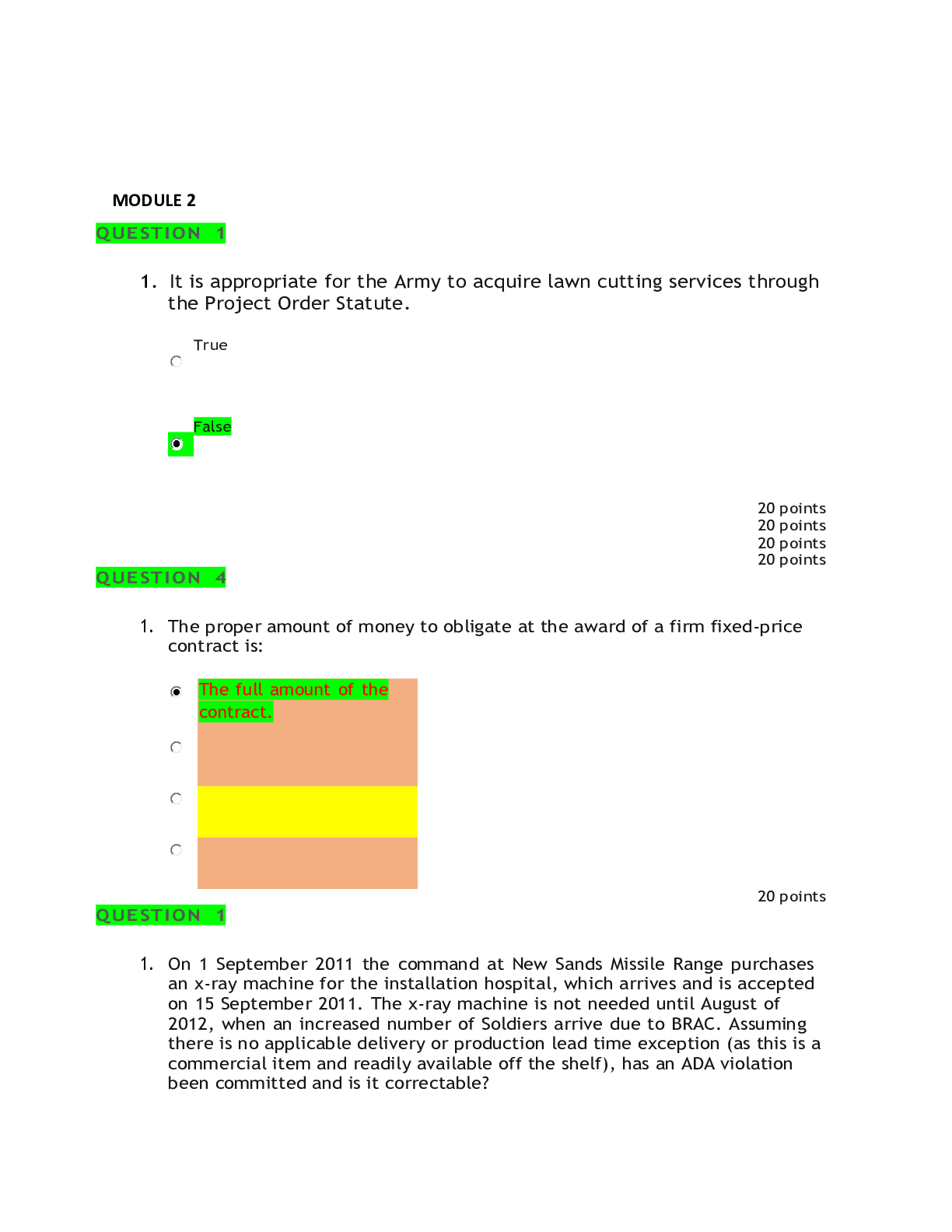

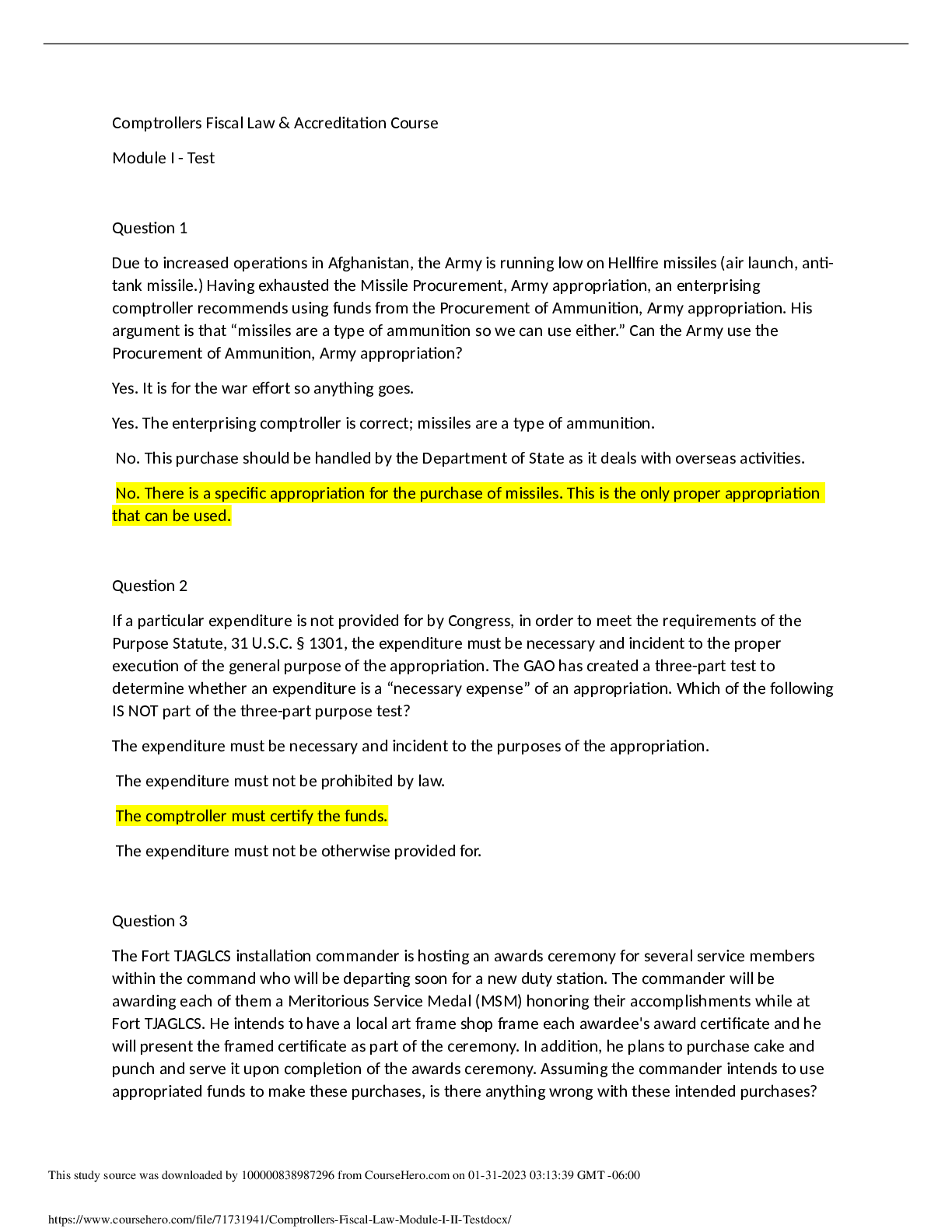
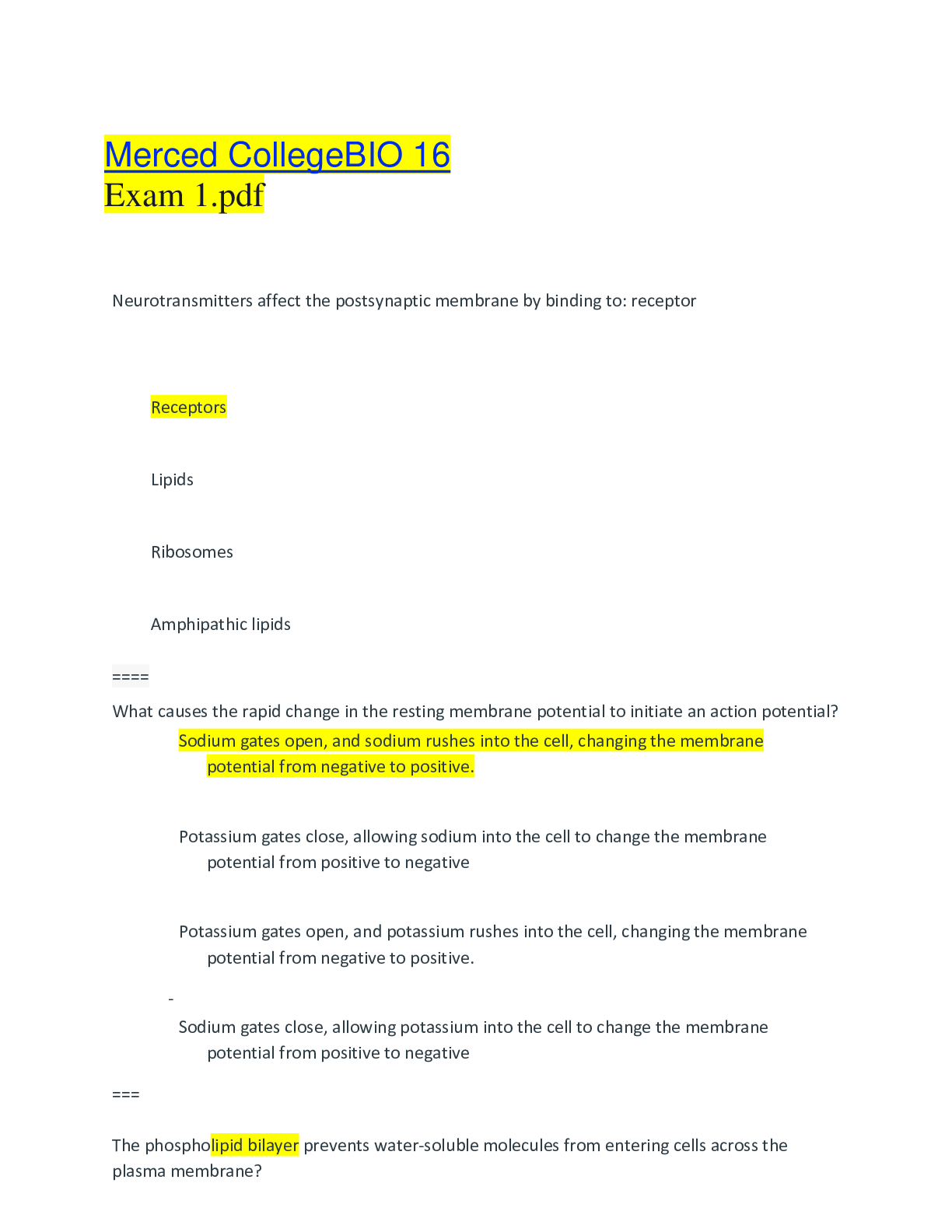
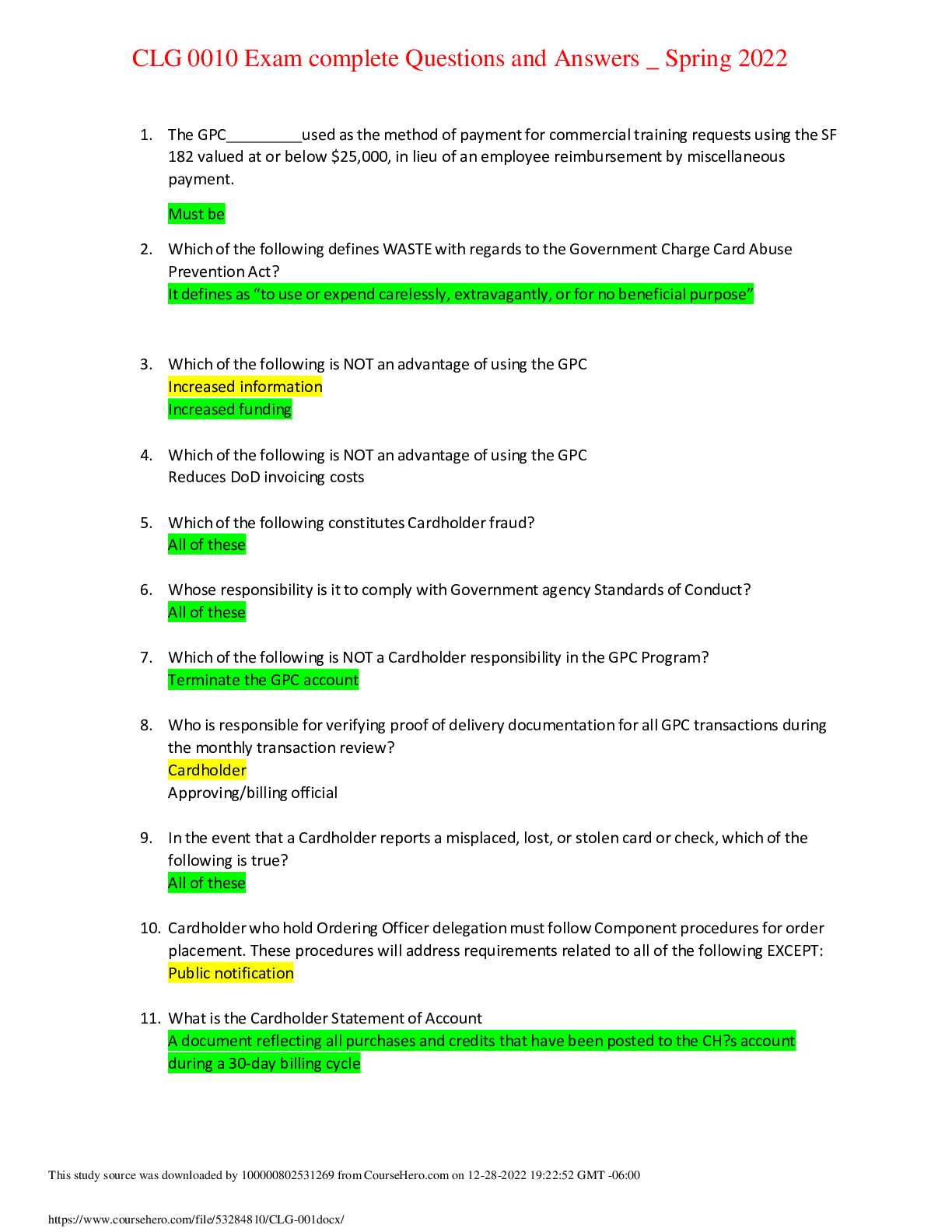
.png)

